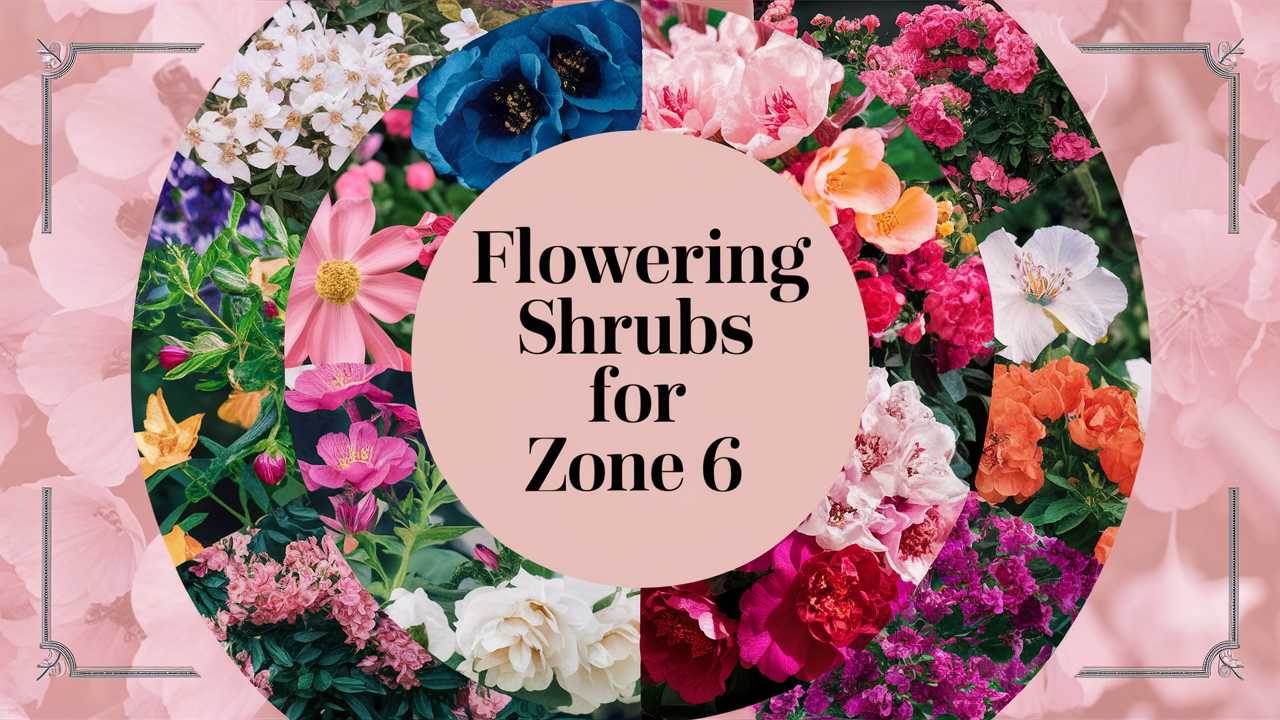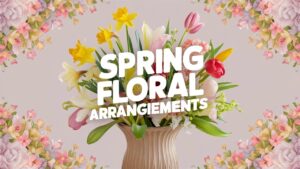In this guide, we’ll explore a selection of beautiful shrubs that thrive in Zone 6, discussing their characteristics, care needs, and seasonal highlights.
Abelia
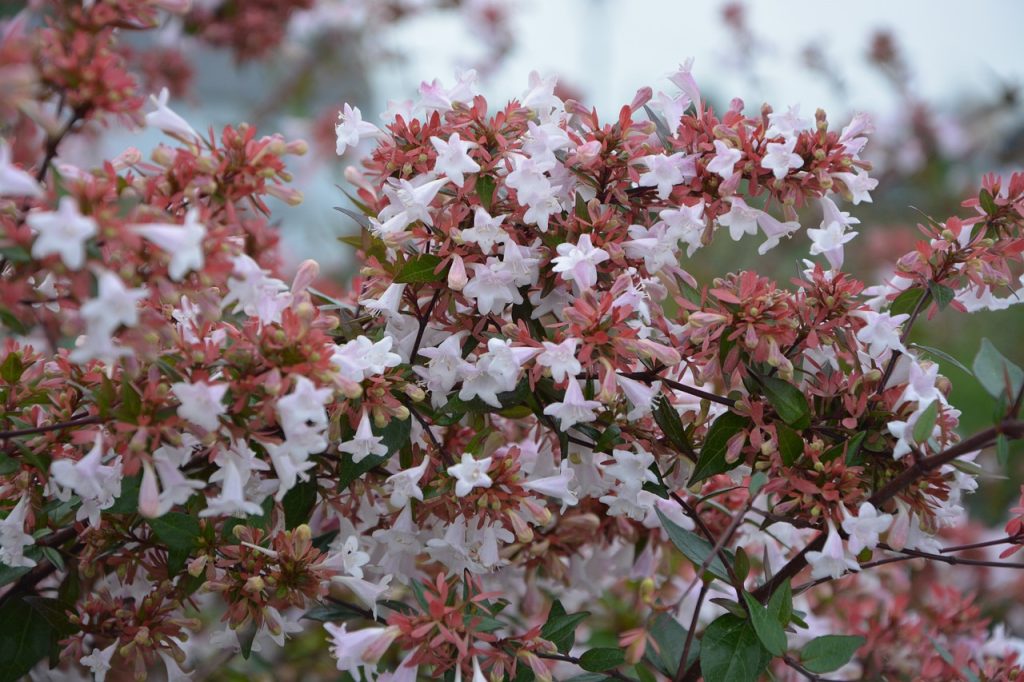
Abelia is a charming shrub that brings year-round interest with its glossy green leaves and colorful blooms. In early summer, tiny, fragrant white or pink flowers appear, attracting butterflies and hummingbirds to your garden. This deciduous shrub grows well in full sun to partial shade and prefers well-drained soil. It’s relatively low-maintenance and drought-tolerant once established, making it a favorite among gardeners. The captivating foliage takes on gorgeous hues in the fall, turning shades of bronze and purple, which adds to its seasonal appeal.
Aronia
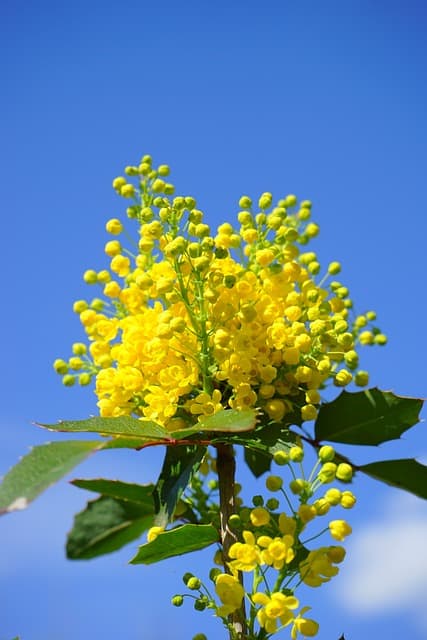
Known commonly as chokeberry, Aronia offers beautiful clusters of white flowers in spring that give way to glossy berries in late summer. These berries aren’t only attractive; they are also packed with antioxidants and can be harvested for jams, jellies, or even wine. Aronia thrives in full sun but can tolerate partial shade; it prefers moist, well-drained soil but can adapt to different soil types. This shrub boasts excellent fall color, with leaves turning vibrant shades of red and purple, enhancing your garden’s visual dynamics as temperatures drop.
Beautybush
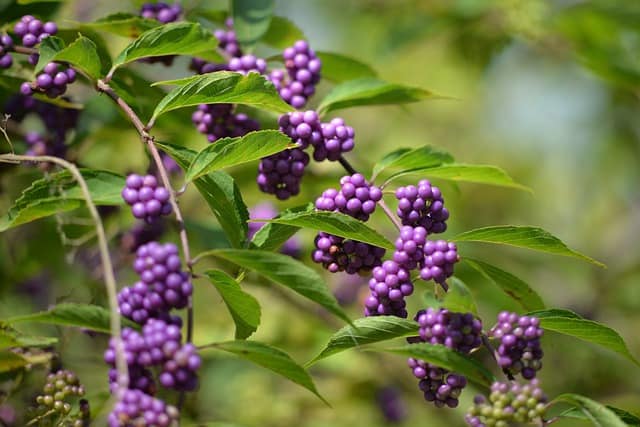
Beautybush is aptly named for its stunning floral display. This deciduous shrub produces clusters of fragrant, yellow flowers that bloom in late spring, creating a delightful spectacle. It thrives in full sun and tolerates various soil conditions, provided they are well-drained. An added benefit is that Beautybush has excellent resistance to pests and diseases, making it a hearty choice for beginners. Once the flowers fade, the summer foliage continues to bring beauty with soft green leaves that can later provide some fall color before dropping for the winter.
Butterfly Bush
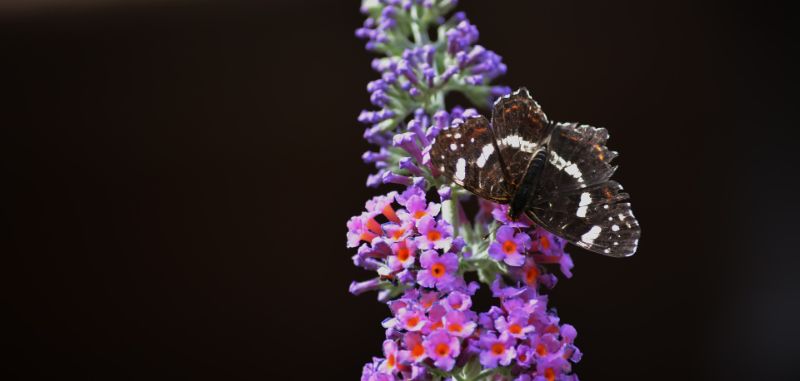
For those looking to attract butterflies and hummingbirds to their garden, the Butterfly Bush (Buddleia) is a prime choice. Blooming from mid-summer to fall, this shrub features long, arching spikes of tiny flowers in various colors, such as purple, white, yellow, and red. It prefers full sun and well-drained soil and flourishes in a hot climate, making it a wonderful candidate for Zone 6 gardens. However, it requires regular pruning to maintain shape and encourage prolific blooming. The lush foliage combined with the vibrant flowers will transform any garden into a vibrant habitat, buzzing with life.
Clematis
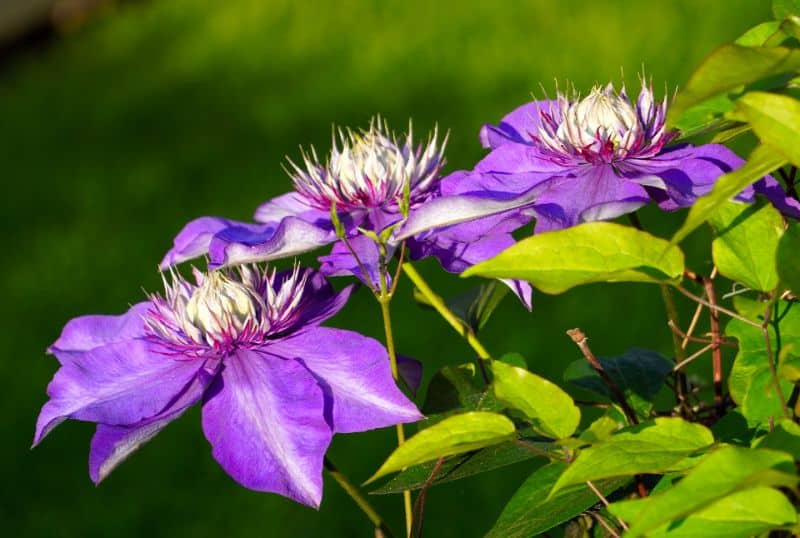
While they can be vine-like, some varieties of Clematis are also grown as shrubs, bringing elegance and charm to any landscape. This perennial favorite bursts into bloom from spring through fall, with flowers in a wide range of colors—pink, white, purple, and blue. Clematis thrives best in full sun with its roots sheltered in partial shade. They enjoy well-drained, fertile soil enriched with organic matter. With proper training and support, these climbing plants can create stunning vertical displays, ideal for fences, walls, or trellises.
Elderberry
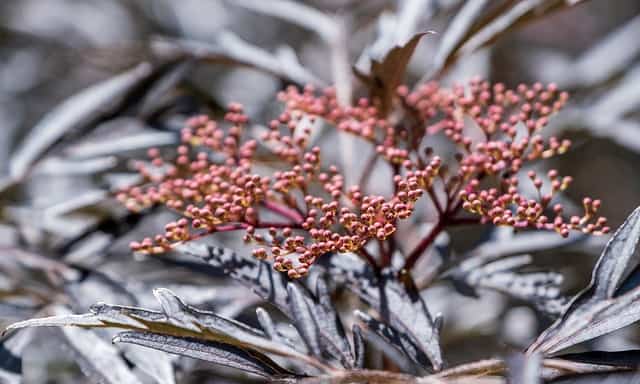
Elderberry (Sambucus) is a versatile shrub that offers a feast for both the eyes and the palate. In spring, it showcases clusters of tiny white flowers that are not only stunning but also attract pollinators. Following the flowering season, dark purple to black berries emerge, which can be collected to create syrups, wines, or jams. This shrub thrives in moist, well-drained soil and prefers full sun to partial shade. Elderberries are also celebrated for their medicinal properties and are a fantastic addition to any wildlife garden, offering habitat and food for local birds and beneficial insects.
Holly
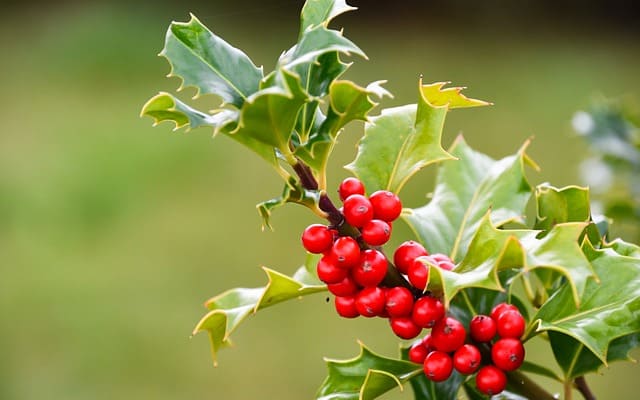
Holly (Ilex) is a classic shrub that adds structure and color to landscapes, particularly in winter. Known for its glossy green leaves and bright red berries, holly serves as an attractive feature year-round. While some varieties are deciduous, most are evergreen, providing constant cover. The colorful berries attract birds in the colder months, while the leaves provide a festive touch during the holiday season. Holly plants prefer well-drained, acidic soil and grow better in partial shade to full sun. Keep in mind that male and female plants are needed for berry production, so plan your shrubs accordingly.
Hydrangea

Hydrangeas are beloved for their voluminous blooms and lush foliage. They come in several varieties, each with unique characteristics. Popular choices for Zone 6 include Hydrangea macrophylla, known for its iconic large flower heads that can be pink or blue, depending on the soil pH. Hydrangeas prefer moist, well-drained soil and thrive in partial shade, making them perfect for wooded or partially shaded areas of your garden. With proper pruning and care, these beauties can provide dramatic floral displays from late spring through fall, transforming any garden into an enchanting oasis.
Lilac
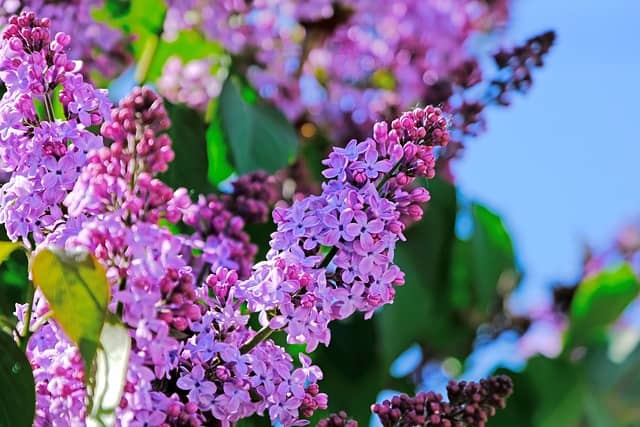
Lilac (Syringa) is a quintessential flowering shrub that evokes memories of spring. With its fragrant purple, pink, or white flowers blooming in late April to early May, lilacs are a must-have for Zone 6 gardens. They thrive in full sun and well-drained soil, offering robust growth and plenty of blossoms when established. Lilacs are also known for their hardy nature, making them an excellent choice for beginner gardeners. After the flowers fade, the foliage continues to offer striking green leaves, making lilacs an attractive garden presence throughout the growing season.
Mock Orange
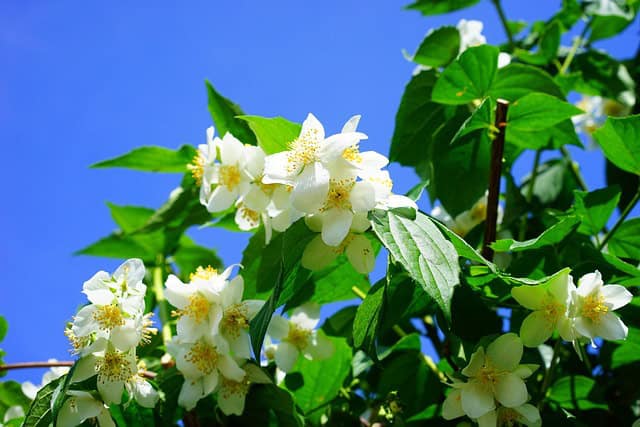
Mock Orange (Philadelphus) is a delightful shrub that brings a sweet, citrus-like fragrance to the garden. With its white, star-like flowers blooming in late spring to early summer, it’s an excellent choice for lining walkways or garden borders—not only captivating in beauty, but also engaging the senses. This shrub appreciates well-drained soil and thrives in full sun to partial shade. Its dense branching makes it suitable for privacy hedges, while the long blooming period ensures that your garden is alive with beautiful fragrances over several weeks.
Rose
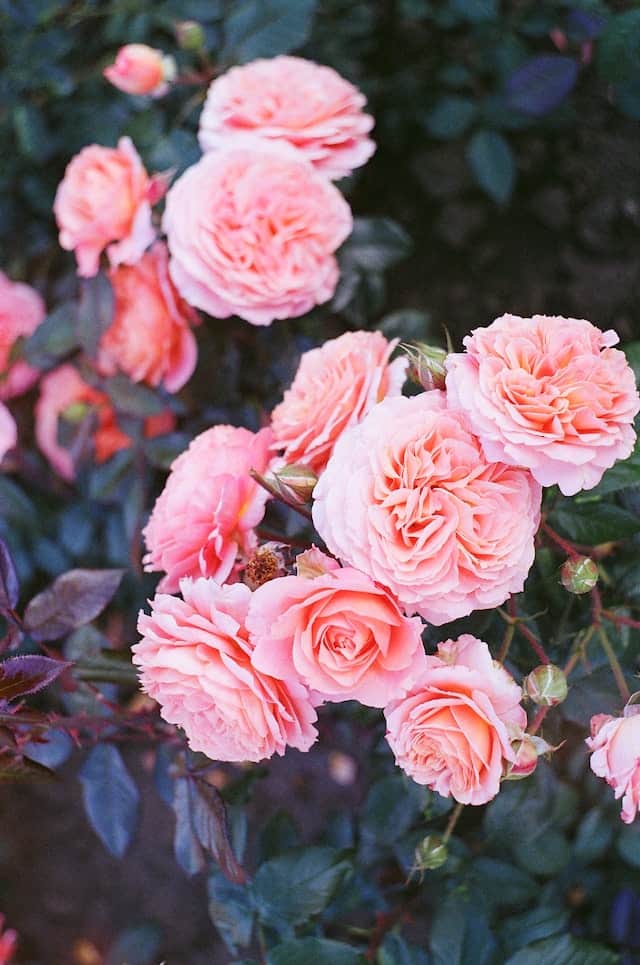
Roses (Rosa) are the epitome of beauty and elegance in any garden. For Zone 6, you have a plethora of varieties to choose from, including hybrid teas, floribundas, and shrub roses. Each type offers its unique charm, with blooms ranging from classic reds to vibrant yellows and pinks. Roses thrive in full sun and well-drained soil, making them ideal for sunny spots in the landscape. Although they require some maintenance, including pruning and pest management, the stunning blooms and delightful fragrance are well worth the effort. Roses will not only beautify your garden but also evoke a sense of romance and timeless beauty.
Ninebark
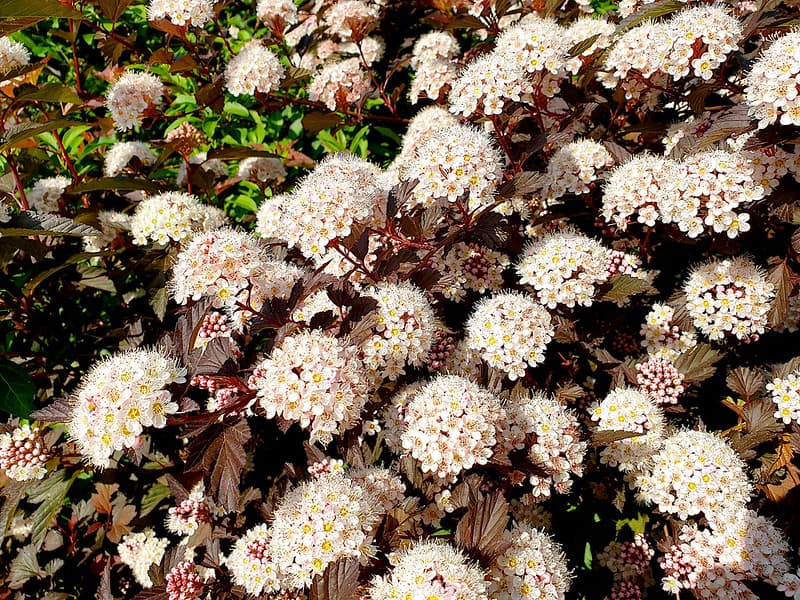
Ninebark (Physocarpus opulifolius) is a multi-stemmed shrub noted for its attractive foliage and striking bark. In spring, it produces clusters of small white flowers that provide a lovely contrast to the dark green or purple-tinted leaves. This shrub is highly adaptable, thriving in various soil conditions, and performs best in full sun. For a low-maintenance garden, ninebark is an appealing choice as it is tolerant of drought and disease. In the fall, you can enjoy the colorful foliage that turns shades of orange and red, adding vibrancy during the changing seasons.
Rose of Sharon
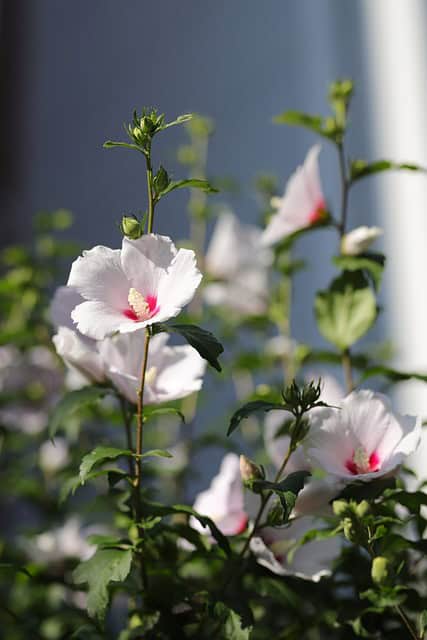
Rose of Sharon (Hibiscus syriacus) stands out for its unique and bold flowers, which bloom from mid-summer until the end of fall. These flowers, which can be white, pink, blue, or purple, resemble small hibiscus flowers and are large and prominent. This deciduous shrub prefers full sun and can tolerate poor soil. One of its notable characteristics is that it attracts butterflies, making it a favorite in pollinator gardens. Although it can grow quite tall, it can be pruned to maintain a smaller size and shape, allowing for flexibility in your landscaping plans.
Arrowwood Viburnum (Viburnum dentatum)
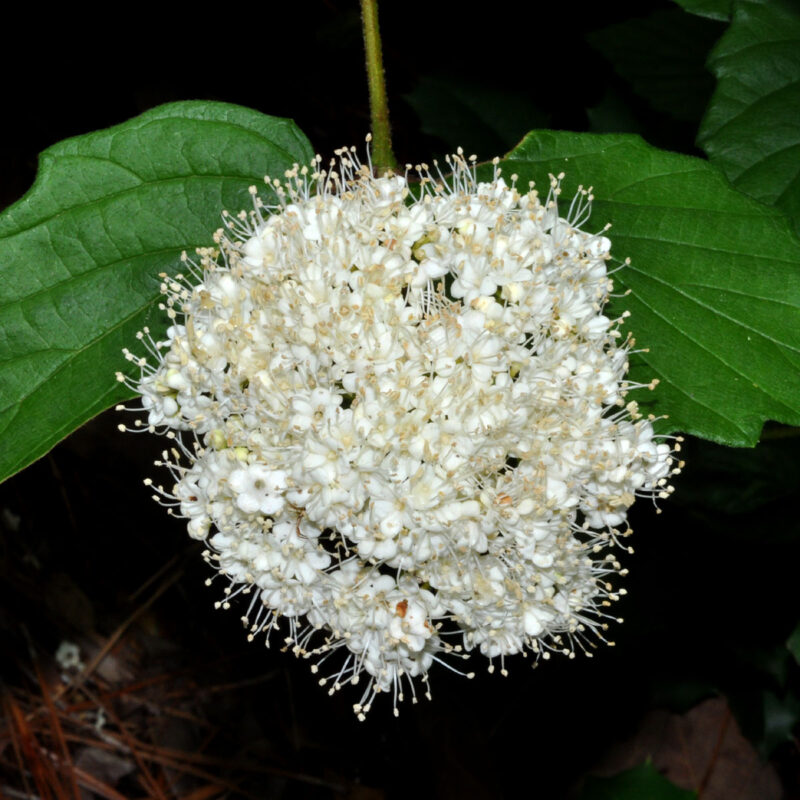
Arrowwood Viburnum (Viburnum dentatum) is a versatile native shrub that features lovely clusters of white flowers in late spring, which attract bees and butterflies. Its glossy green leaves turn bright red in the fall, providing a colorful display through autumn. This deciduous shrub thrives in partial shade to full sun and is tolerant of a range of soil conditions. Additionally, its berries can be a food source for birds in winter. Arrowwood Viburnum can act as a fantastic privacy hedge or a charming feature in a mixed shrub border.
Weigela
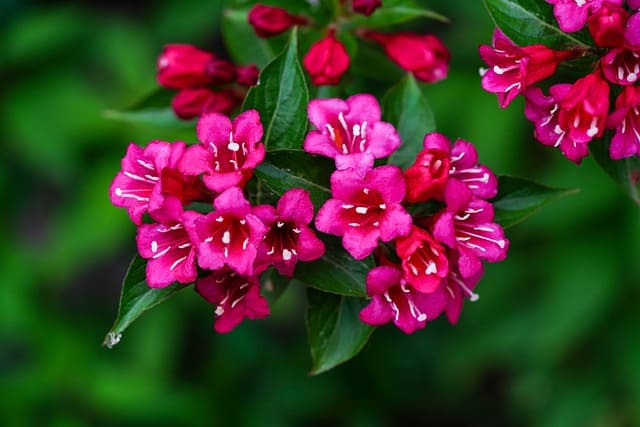
Weigela is a wonderfully diverse shrub that adds flair to any garden with its continuous blooms from late spring to early summer. With trumpet-shaped flowers in shades of pink, red, or white, this shrub is a magnet for hummingbirds and bees. It prefers full sun and well-drained soil and requires minimal care beyond the occasional pruning to maintain its shape. Many modern varieties offer vibrant foliage in addition to colorful blooms, providing multi-season interest. Broadly adaptable, Weigela fits beautifully into various garden styles, from cottage gardens to more formal landscapes.


